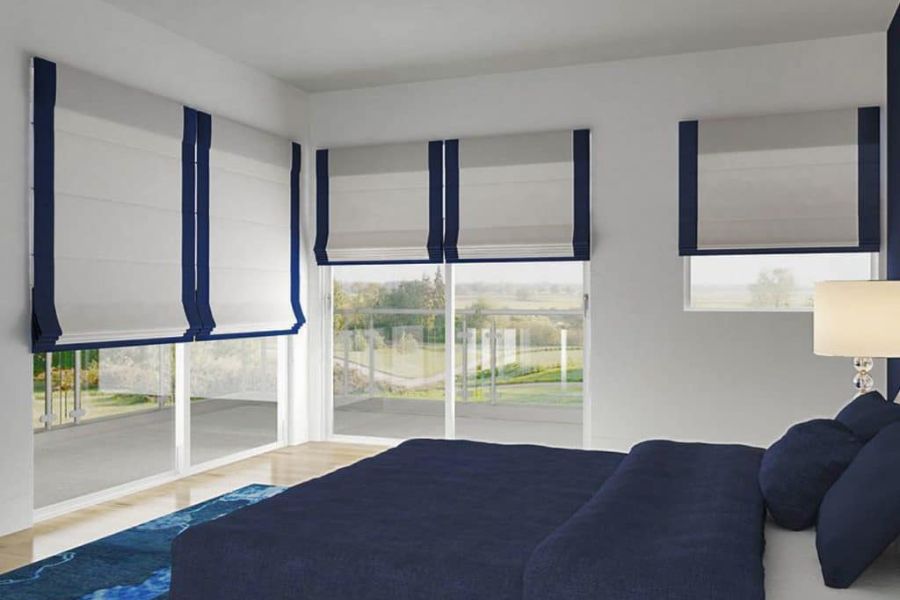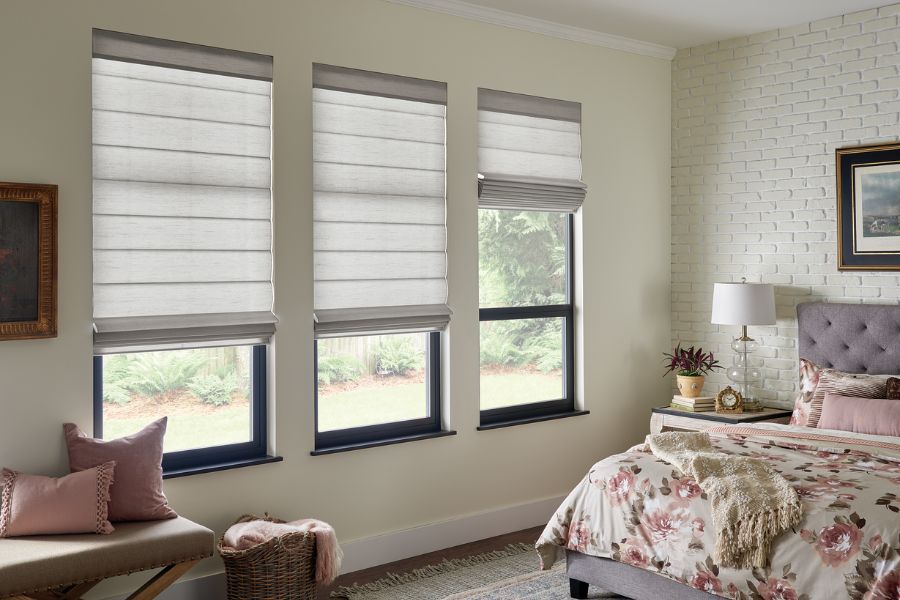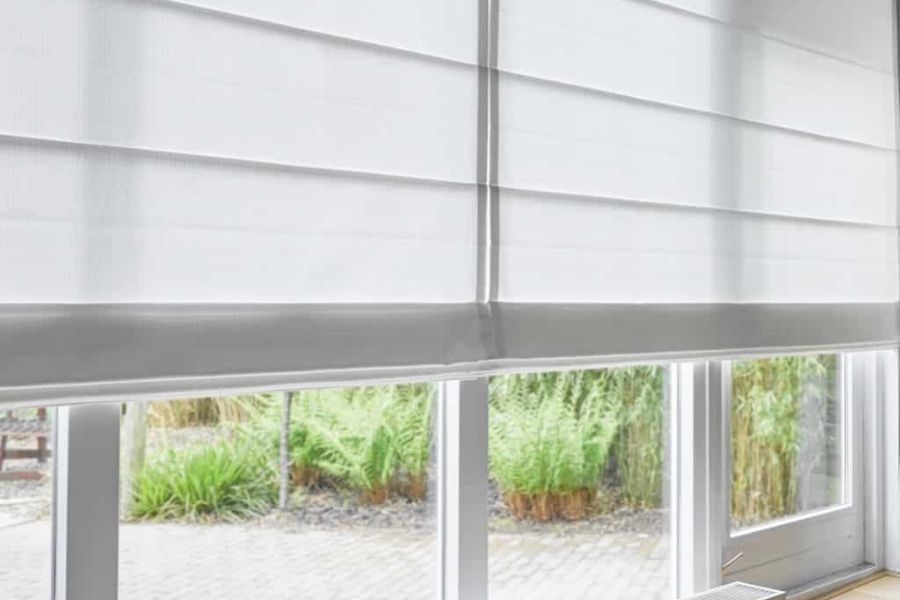Key Takeaways
- Shutters are solid window coverings with adjustable louvers, while blinds are practical window coverings made of vertical or horizontal slats.
- Regarding shutters vs blinds, shutters generally offer superior insulation and durability compared to blinds, making them more effective at temperature control and longer-lasting. Scroll down to see other differences.

shutters vs blinds
The Overview of Shutters
Shutters are solid window coverings made of vertical or horizontal slats, known as louvers, which can be monitored to control light, privacy, and airflow. They come in many materials, such as wood, vinyl, and composite. Shutters are versatile and add a classic, stylish look to any home.
There are 2 primary types of shutters: interior and exterior. Interior shutters are installed inside the home and are primarily used for light control, privacy, and insulation. They come in styles like café shutters, which cover only the bottom half of the window, and plantation shutters, which have wide louvers and provide a modern, elegant look.
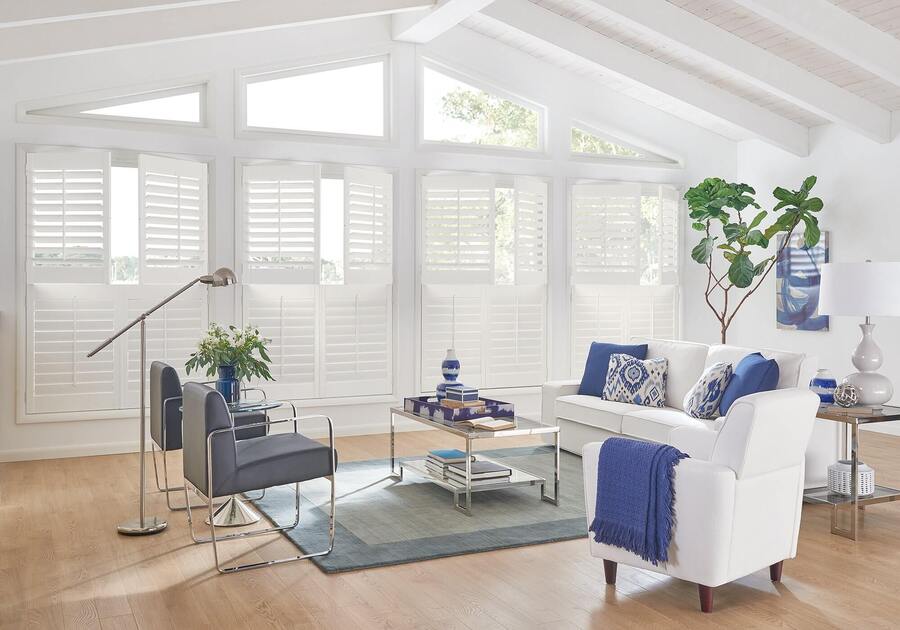
Overview of Shutters
Exterior shutters are mounted outside the home and can offer additional protection against weather and enhance curb appeal. Styles include board-and-batten, louvered, and raised panel shutters.
Shutters could be custom-made to fit any window size and come in various colors and finishes to match home decor. They are known for their durability and low maintenance. Unlike curtains or blinds, shutters do not collect as much dust and can be easily wiped clean, making them a great choice for many homeowners.
See more: Top Curtain Styles And Ideas For Beautiful Bay Windows.
The Overview of Blinds
Blinds are practical window coverings made of vertical or horizontal slats that can be monitored to control light, privacy, and airflow. They are available in wood, metal, vinyl, and fabric, and various styles are available to suit different preferences and needs.
There are several main types of blinds:
- Venetian Blinds: These feature horizontal slats that can be tilted to regulate light and privacy. They are known for their sleek, modern appearance and ease of use.
- Roller Blinds: Made from a single piece of fabric, roller blinds roll up neatly at the top of the window when not in use, offering a simple and clean look.
- Vertical Blinds: Ideal for sliding doors and large windows, these blinds have vertical slats that can be tilted for light control and drawn to the side for an unobstructed view.
- Roman Blinds: These fabric blinds fold into pleats when raised, providing a soft, elegant appearance.
Blinds are easy to maintain, often requiring just a quick dusting or wiping down. They are favored for their ability to provide precise control over light and privacy. Additionally, blinds come in various colors and finishes, making them a versatile option for any home decor.
See more: What Makes Artisan Drapery Different From Regular Curtains.

Overview of Blinds
Shutters vs Blinds: A Comprehensive Comparison
Both shutters or blinds offer unique advantages and have their own considerations.
This guide aims to help you make an informed choice by breaking down the differences between shutters vs blinds and providing a comprehensive comparison based on key factors such as design impact, light control, insulation, durability, and cost.
Aesthetics and Design Impact
The first thing used to differentiate between blinds or shutters is their design. Shutters provide a classic, clean look that can enhance the architectural details of your home. They are ideal for traditional and contemporary interiors alike.
On the other hand, blinds offer more flexibility in design, with various styles ranging from sleek and modern to warm and rustic. The choice between shutters and blinds ultimately depends on the overall aesthetic you wish to achieve.
Light Control and Privacy
Another difference between shutters and blinds is light control and privacy. Both shutters and blinds offer excellent light control and privacy options. You can adjust the louvers to let in just the right light while maintaining privacy.
Blinds, with their adjustable slats, offer similar functionality. However, shutters generally provide better insulation and light blockage due to their solid construction.
Energy Efficiency and Insulation
Shutters are known for their superior insulation properties. The solid panels help to reduce heat transfer, keeping your home cooler in the summer and warmer in the winter.
While blinds also provide some insulation, they are less effective than shutters. For homeowners looking to improve energy efficiency, shutters are the better choice.
Durability and Longevity
When considering the difference between blinds and shutters, you should also consider their durability. In fact, shutters have the edge over blinds. Made from sturdy materials, shutters are built to last and withstand years of use without showing signs of wear.
While durable, blinds are more susceptible to damage over time, especially in homes with pets and children or high-traffic areas.
Cost Comparison
You can compare the cost of shutters vs blinds before deciding to buy. Blinds are generally more affordable than shutters, which is the best choice for budget-conscious homeowners. However, the long-term value must be considered.
While shutters have a higher upfront cost, their durability and energy efficiency can lead to replacement costs over time and savings on energy bills.
Shutters vs Blinds: Which Is The Right for You?
After explaining the differences between shutters vs blinds, we will introduce shutters vs blinds pros and cons to help you choose the right one for your house.
Pros and Cons of Shutters
| Pros | Cons |
|
|
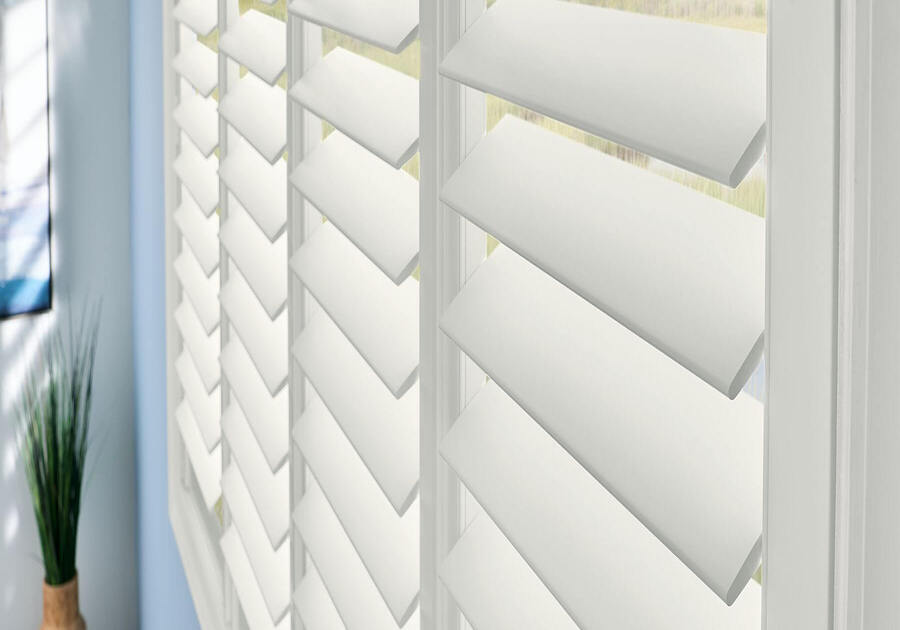
Shutters
Pros and Cons of Blinds
| Pros | Cons |
|
|
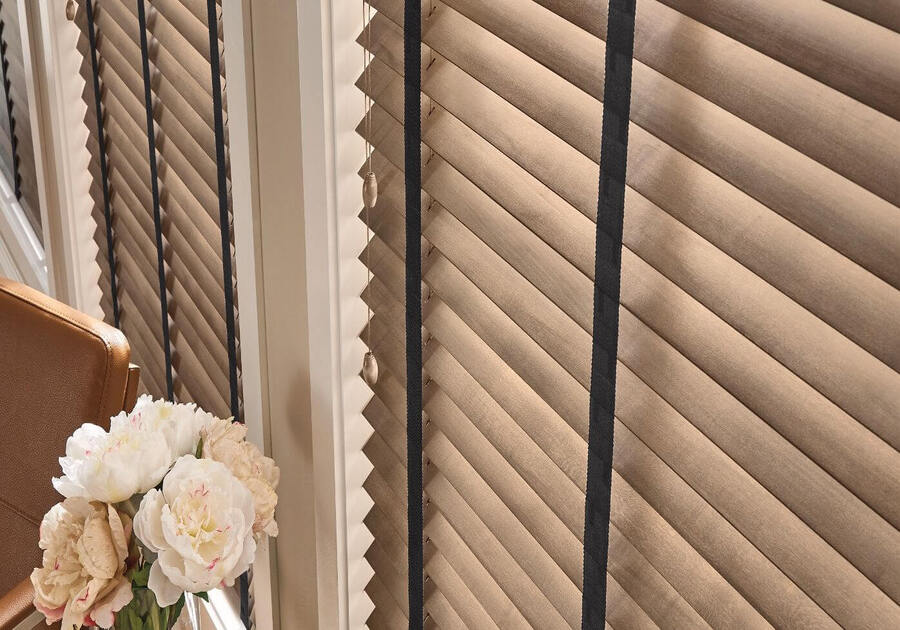
Blinds
Deciding between shutters or blinds depends on your specific needs and preferences. Shutters are an excellent investment if you value timeless design, superior insulation, and long-lasting durability.
On the other hand, blinds may be the better option if you seek flexibility in style, ease of use, and a lower initial cost. Consider the aesthetics, functionality, and budget to determine which window treatment best complements your home decor.


